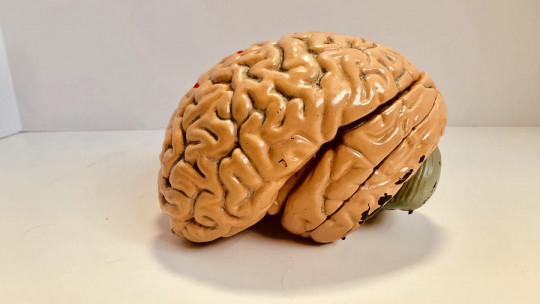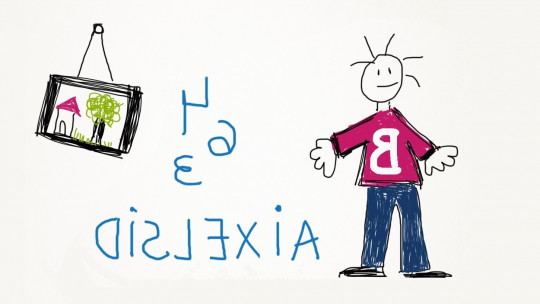
Within the dual route model we find two routes that are believed to be used when we read: the lexical route and the phonological route. The lexical route is the most used when we have advanced reading skills and we already knew the words we see, while the phonological route is used when we are still learning to read and when faced with unknown words.
Given the importance that the phonological route acquires in the first moments of learning to read, any problem that may arise in it represents a significant handicap in learning any subject in the school environment. Below we will look at this second route in more depth and assess its importance.
The phonological route within the double route model
Throughout the history of cognitive psychology, specifically the psychology of reading, attempts have been made to identify and understand the cognitive processes involved in reading and writing. The reason for this is not only to want to expand knowledge but also to guide it to meet the needs and possible difficulties in the acquisition of reading and writing for boys and girls of school age Having problems reading is synonymous with having problems learning.
Within the cognitive perspective we find that there are various methods to learn to read. There are alphabetic methods, focused on the pronunciation of letters, phonemes and syllables, while there are other more global methods, which focus on learning to pronounce the words and say the sentences in their entirety as a first contact with reading. These methods are useful depending on the language, with the alphabetic ones being more appropriate for transparent languages such as Spanish or Italian, while the latter are for languages that are not read as they are written, such as English or Gaelic.
It was as a result of the existence of these two types of reading acquisition methods that the double route model emerged As its name indicates, it is a theory that supports the existence of two routes involved in reading: the lexical route and the phonological route. Next we are going to talk briefly about the lexical route to understand what the phonological route is about and why it is so important in the acquisition of reading languages that are read as they are written, as is our case.
The lexical route
The lexical or visual route is that way of reading through which we read the words in their entirety, without having to break them down letter by letter or syllable by syllable This route is also called direct because the reader uses it to directly access the meaning of the word stored in the LTM (long-term memory) when the word in question is known. This specific identification process is called addressed phonology and is very similar to the one we use to identify any visual stimulus.
All of us who have already acquired the skill of reading have a mental or visual lexicon, in which the representations of the words that are part of our vocabulary are found, but not their meaning. According to the model, when we read through the lexical route, what we do is compare the form of the word in front of us with others that are familiar to us and that we use frequently, such as “table”, “chair”, “dad”. , “car” or “ball”.
To obtain the meaning of the word in question, it is necessary to access its semantic component. In the lexical route, phonology is not used in the identification of the word, since the orthographic representation is considered sufficient to activate the lexical entry directly as it is a word with which one is already familiar. In other words, When we know the word very well and we already have it stored in our memory, we do not read it completely, but rather the representation associated with it is directly activated
Thus, reading through the lexical route involves the following phases:
It is this route that explains why when we read quickly and paying little attention we commit errors such as substituting words that are similar, such as “nightgown” for “song” or “bed” for “cana” When this route is damaged, it happens that the person, despite knowing the word in front of them, has to resort to the phonological route, reading letter by letter, such as “table.”
The phonological route
The phonological or indirect route It is the one we use during the grapheme-phoneme conversion process, that is, when letters are identified and transformed into separate sounds The reason why this route is called phonological is because a phonological recoding process is carried out, that is, we focus on the sounds (phonemes) of each of the letters (graphemes) that make up the written word (rules). grapheme-phoneme conversion).
This is the first route used during the acquisition of reading in languages such as Spanish and Italian, because boys and girls are still acquiring literacy and, to learn to read, they are first taught the sounds of the letters separately. However, it is not a route exclusively used by schoolchildren, but is used at any age when we are faced with an unknown, very long, invented word or from another language. If we do not have a representation for that word stored in our MLP, we cannot recognize it globally and we read it letter by letter.
So that, The main characteristic of the phonological route of reading is the identification of the letters that make up a word, subsequently accompanied by the transformation into sounds to recognize the written word aurally. In this process, use is made of the WDM (working memory) and the spoken words are stored in a component of this type of memory: the phonological loop, the system responsible for temporarily preserving the verbally encoded material.
Phases of the phonological pathway
The phonological route is longer than the lexical route, involving many more steps, which are as follows.
1. Visual analysis
Unlike the lexical route, in the phonological route The word is not analyzed globally, but focuses on each of the letters and syllables of it processing the word little by little.
2. Letter identification
Once the letters that make up the word have been analyzed, The next step is to identify them by searching for them in our memory That is to say, in the word “table” what the student does is detect that it is composed of the letters “m”, “e”, “s” and “a”, symbols that sound familiar to him or that he remembers having learned.
- Related article: “Learning disorders: types, symptoms, causes and treatments”
3. Phoneme assignment and articulation
The assignment of phonemes and articulation involves applying the rules of grapheme-phoneme conversion and their articulation. That is to say, involves transforming the symbol into a sound and pronouncing it In this step the student would pronounce the letters of the word “table” separately such that: /m/, /e/, /s/ and /a/
4. Auditory analysis
By orally pronouncing the chain of phonemes we hear what we are saying, We carry out an auditory analysis of the sound stimuli and understand how it is pronounced globally In this case, the student would repeat the word this time in syllables or in full: /me-sa/ or /mésa/

5. Understanding the meaning
Finally, the last step when using the phonological route is to recognize what we have pronounced, allowing us to access the meanings that we have stored in our semantic system Here the schoolboy, once he had said / mésa / would know that he had said the word “table”, understanding it as “four-legged object on which things are placed”.
It is important to comment that, especially in children who do not yet know some reading rules (e.g., c+e,i = /ze, /se/ and /zi, /si/; g+e,i = /je/ and /ji/), errors will be made such as reading “heaven” for /kielo/ or “people” for /guente/. These errors are totally normal, since as they have not yet learned certain exceptions of the language, they will read the words as they have learned to read each of the letters that make them up, letter by letter.
Learning difficulties and phonological route
Since the phonological route is fundamental in the first phases of learning to read, any problem in it will generate learning problems in general. Not being able to apply the grapheme-phoneme rules means that the child is practically unable to read in writing and, therefore, any task associated with the academic field is especially complicated.
Schoolchildren who have reading difficulties usually show the following problems.
- Slow reading pace.
- Excessive syllable.
- Segmentation of words into letters or syllables.
- Little or no reading comprehension.
- Reading not appropriate for their school or chronological age.
- Reading words marking the stressed syllable where it does not belong.
- Poor pronunciation and intonation.
- Excessive tracking of letters with the finger.








